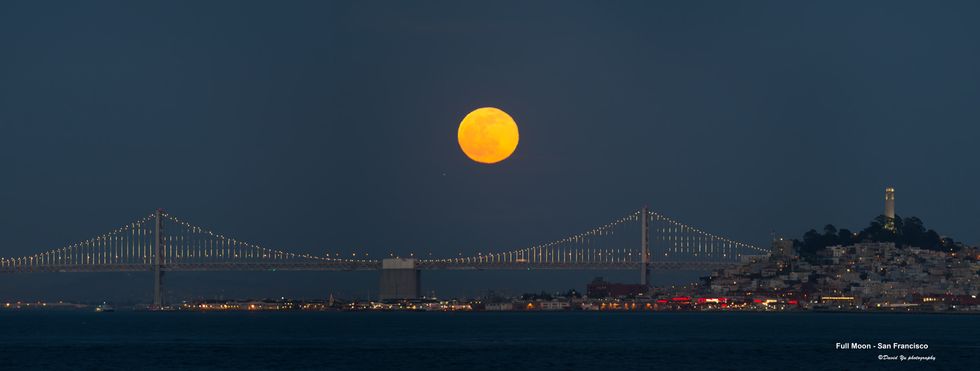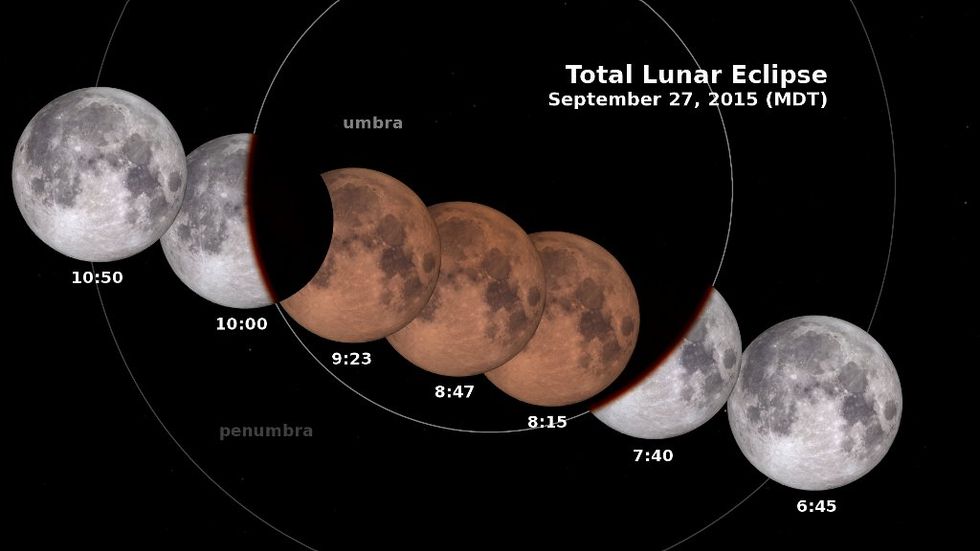Super blue blood moon -- that's what happened in the sky from 4 a.m. to 6 a.m. in California one night.
No blood, but definitely an otherworldly experience. Even though half of my school's power shut down like a foreboding warning, residents still gradually trickled out of the building in the dark to see the rare sight of the red eclipse. Let's break down this wild name and find out some other moon types as well!
1. Super Moon
Unhindered by kryptonite, unlike another super, a supermoon can cause especially high or low tides. Supermoons occur during the moon's closest point to Earth in the monthly orbit. Only every so often is a supermoon also a full moon, however, as the other times, the moon is invisible as the new moon. If you missed out this time, check out the dates for the past and future supermoons from 2010 to 2020.
2. Blue Moon
"Once in a blue moon." You've probably heard the saying, but do you know what it actually refers to? Although the moon can appear to be gold or even red, the moon won't be appearing blue for human eyes anytime soon. A blue moon is simply the second full moon in a calendar month, which happens quite rarely as a moon cycle is about 29.5 days. A blue moon occurs about every two and a half years.
3. Blood Moon
Yes, the blood moon bleeds. Well, it bleeds as in reflects the color red. During a total lunar eclipse, the Earth passes exactly between the sun and the moon, thus making the moon be in Earth's shadow. However, sunlight still gets filtered through Earth's atmosphere and scatters blue and purple color wavelengths. Thus, red and orange wavelengths reach the moon. Thank you technology for letting us know that the world isn't ending during a blood moon.
4. Black Moon
While a blue moon refers to the second full moon in a month, a black moon refers commonly to the second new moon in a month. Or, according to Space.com columnist Joe Rao, a black moon can refer to either "a situation in which there are no new months in an entire month" or "the third new moon in a season of four moons."
5. Every name for every full moon of the month.
Yes, each and every full moon of the 12 months has its own name. Many of these names have originated from Native American culture. My personal favorite is the Snow Moon, but maybe I'm biased for my birthday month.
January: Wolf Moon
February: Snow Moon
March: Worm Moon
April: Pink Moon
May: Flower Moon
June: Strawberry Moon
July: Buck Moon
August: Sturgeon Moon
September: Harvest Moon
October: Hunter's Moon
November: Beaver Moon
December: Cold Moon







 StableDiffusion
StableDiffusion StableDiffusion
StableDiffusion StableDiffusion
StableDiffusion Photo by
Photo by  Photo by
Photo by  Photo by
Photo by 
 Photo by
Photo by  Photo by
Photo by  Photo by
Photo by  Photo by
Photo by  Photo by
Photo by 











